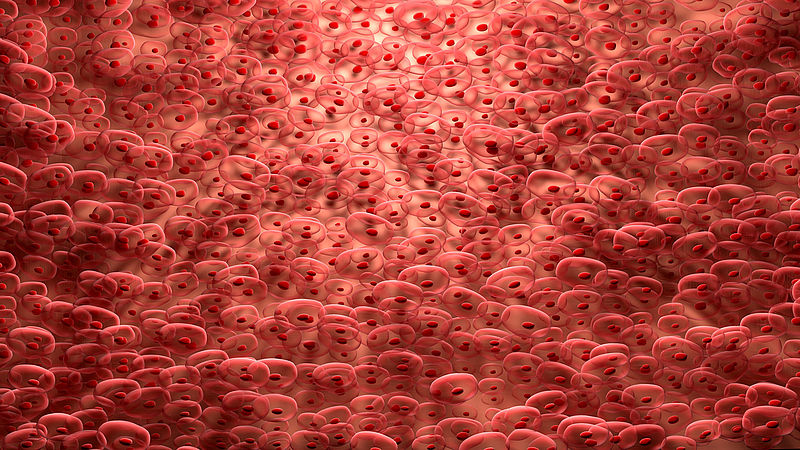The pathological enlargement of the heart muscle, also called dilated cardiomyopathy (DCM), leads to a progressive loss of pumping capacity. DCM is the leading killer of children with heart muscle disorders and is usually triggered by inflammation of the heart muscle or genetic mutations, but the cause is often not known. The therapy of the young patients proves to be a challenge with so far few treatment options.
Individual analysis of individual heart cells
The present study by scientists and medical doctors from Frankfurt, Gießen, and Tübingen was carried out using single cell sequencing. This is a new way of examining the individual cells of the heart. The RNA of each cell type can be examined individually in tissue samples from patients and their gene expression patterns can be compared. The researchers examined tissue samples from children aged 6 months to 13 years with DCM and cardiac failure as a result. In the tissue samples, the researchers found new insights into age- and disease-dependent processes in the various cells of the heart. Regenerative genes were active in the heart muscle cells responsible for the pump function of the patients under 1 year old, which can contribute to the independent renewal of the damaged heart muscle. In adolescent patients this potential decreased with increasing age. In addition, fibroblasts, the cells of the connective tissue, showed an activated and stiffening pattern in the hearts of adolescent patients, which increases depending on the age of the children. In addition, there was an age-dependent change in genes that play a special role in the effect of drugs (ß-blockers).
Precise diagnosis and personalized therapy
The examinations at the single cell level enable the creation of a fingerprint, which takes on specific shapes depending on the age of the patient and could support the therapy of the sick as a precise new diagnostic tool. Children with predominantly regenerative characteristics could be treated with drugs that stimulate regeneration, while patients with high levels of activated fibroblasts could benefit from the early use of anti-fibrotic therapies. The new method could also help to use available drugs in a more targeted and age-adapted manner.
This project was funded by the Cardio-Pulmonary Institute (CPI), the German Center for Cardiovascular Research (DZHK) and the Dr. Rolf M. Schwiete Foundation. The results of the study were published in the journal Circulation on February 23.
Original publication: Single Nuclei Sequencing Reveals Novel Insights into the Regulation of Cellular Signatures in Children with Dilated Cardiomyopathy. Nicin L, Abplanalp WT, Schänzer A, Sprengel A, John D, Mellentin H, Tombor L, Keuper M, Ullrich E, Klingel K, Dettmeyer RB, Hoffmann J, Akintuerk H, Jux C, Schranz D, Zeiher AM, Rupp S, Dimmeler S. Circulation. 2021 Feb 23. doi: 10.1161/CIRCULATIONAHA.120.051391. Online ahead of print. PMID: 33618539
Scientific contact: Prof. Stefanie Dimmeler, Institute for Cardiovascular Regeneration, Centre of Molecular Medicine, Goethe University Frankfurt, dimmeler(at)em.uni-frankfurt.de




